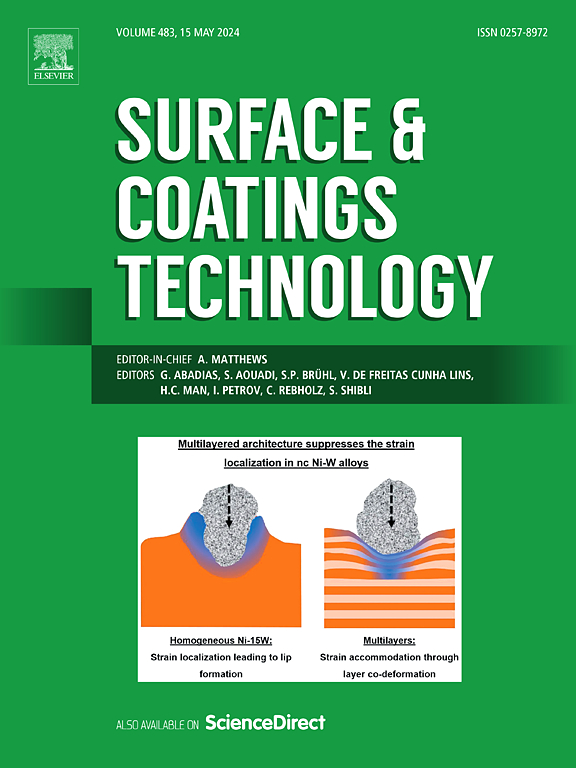Enhancement of high-temperature stability of solar absorber coatings on metallic substrates through diffusion barriers
IF 5.3
2区 材料科学
Q1 MATERIALS SCIENCE, COATINGS & FILMS
引用次数: 0
Abstract
The high-temperature stability of solar absorber paints is critical for the efficiency of concentrating solar power systems, particularly central towers operating at ∼800 °C, where ion interdiffusion at the coating/substrate interface is significant. This work examines the effect of a diffusion barrier (DB) formed by controlled surface oxidation of stainless steel 316L (SS316) and Inconel 625 (INC625) at 800 °C to improve the thermal stability and optical performance. A CrAlSiN/AlSiO solar absorber tandem structure was deposited on oxidized and unoxidized substrates, with their stability compared after annealing at 800 °C for 2 h. The presence of the DB layer resulted in improved thermal stability and optical performance, with post-annealing absorptance values of 0.953 (SS316) and 0.949 (INC625), surpassing those of the reference samples, without the diffusion barrier (0.932 and 0.901, respectively). Microstructural and spectroscopic analyses confirmed the effectiveness of the DB, highlighting its potential for advanced concentrating solar power applications.
求助全文
约1分钟内获得全文
求助全文
来源期刊

Surface & Coatings Technology
工程技术-材料科学:膜
CiteScore
10.00
自引率
11.10%
发文量
921
审稿时长
19 days
期刊介绍:
Surface and Coatings Technology is an international archival journal publishing scientific papers on significant developments in surface and interface engineering to modify and improve the surface properties of materials for protection in demanding contact conditions or aggressive environments, or for enhanced functional performance. Contributions range from original scientific articles concerned with fundamental and applied aspects of research or direct applications of metallic, inorganic, organic and composite coatings, to invited reviews of current technology in specific areas. Papers submitted to this journal are expected to be in line with the following aspects in processes, and properties/performance:
A. Processes: Physical and chemical vapour deposition techniques, thermal and plasma spraying, surface modification by directed energy techniques such as ion, electron and laser beams, thermo-chemical treatment, wet chemical and electrochemical processes such as plating, sol-gel coating, anodization, plasma electrolytic oxidation, etc., but excluding painting.
B. Properties/performance: friction performance, wear resistance (e.g., abrasion, erosion, fretting, etc), corrosion and oxidation resistance, thermal protection, diffusion resistance, hydrophilicity/hydrophobicity, and properties relevant to smart materials behaviour and enhanced multifunctional performance for environmental, energy and medical applications, but excluding device aspects.
 求助内容:
求助内容: 应助结果提醒方式:
应助结果提醒方式:


